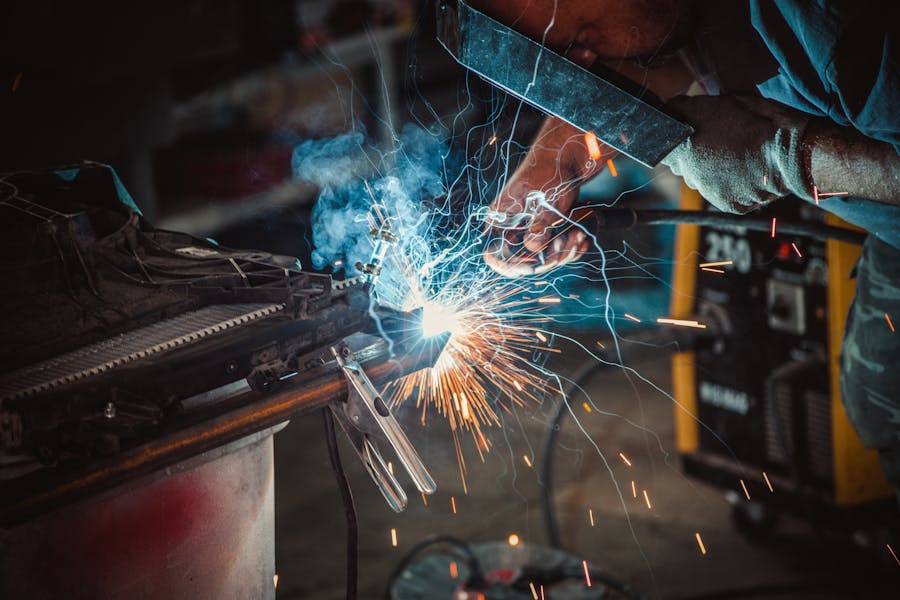
Revolutionizing Manufacturing: Welding Robots and Their Applications
Robots have long been utilized in manufacturing, with the welding industry being no exception. However, recent advancements in welding technology and robotics have left traditional welding techniques in the dust. With the rise of welding robots, manufacturing companies are seeing a significant increase in efficiency and accuracy in their production processes.
Many industries, such as the automotive and aerospace industries, have already adopted welding robots and seen a huge improvement in their production capabilities. Welding robots can complete tasks that human workers simply cannot achieve, such as welding in tight or confined spaces, at high speeds, and with extreme accuracy. Not only do welding robots improve the production process, but they also provide a safer work environment for employees.
In the coming years, it's quite conceivable that welding robots will become the norm in manufacturing, replacing traditional welding techniques entirely. As the demand for efficient and cost-effective production processes grows, companies that incorporate welding robots will have a competitive advantage in the market.
Reducing Welding Costs with Robots
One of the most significant advantages of using welding robots in manufacturing is the cost reduction they offer. Traditional welding techniques require highly skilled workers to operate the equipment, which can be costly for companies. With welding robots, the need for skilled labor is reduced, and production times are significantly faster. Additionally, welding robots produce more consistent welding quality, resulting in fewer defects and less waste, which ultimately decreases production costs.
Another cost-saving benefit of welding robots is their ability to work continuously without breaks. Unlike human workers, welding robots do not need to stop for lunch breaks or shift changes, resulting in significantly increased productivity. Additionally, welding robots can work 24/7, meaning that production times are no longer limited to specific time schedules. Finally, while the initial investment in welding robots can be expensive, it's a wise long-term investment for manufacturing companies that are looking to reduce costs and increase their output capacity.
Improving Welding Quality with Robots
Another significant advantage of welding robots in manufacturing is the improvement in welding quality that they provide. Welding robots can operate with extreme precision and consistency, resulting in higher-quality welds and fewer defects. The accuracy of welding robots eliminates human error and ensures that welds are completed uniformly each time.
In addition, welding robots are not affected by environmental conditions, which can affect traditional welding techniques. This means that welding robots can complete high-quality welds in harsh working conditions, such as extremely hot or cold temperatures, and in areas with poor ventilation. Welding robots also have better reach and dexterity than human welders, allowing them to complete welding tasks that would be otherwise impossible for a human to complete.
The ability of welding robots to provide consistent, high-quality welds is a key factor in their increasing adoption in modern manufacturing. Manufacturing companies that utilize welding robots can expect significant improvements in welding quality, leading to fewer defects and reducing overall costs associated with reworking products or scrapping defective materials.
Future of Welding Robots in Manufacturing
As technology continues to advance, we can expect to see even further integration of welding robots into the manufacturing industry. For example, welding robots with improved machine learning capabilities can adapt to new production techniques and optimize their processes over time. These robots can even identify defects in real-time, allowing for adjustments to be made immediately and reducing the risk of defective products reaching the market.
Furthermore, welding robots will become more intuitive to operate and integrate seamlessly into the overall manufacturing process. As welding robots become more affordable and easier to implement, smaller businesses will also start incorporating them into their production processes. It's clear that welding robots will continue to revolutionize the manufacturing sector, improving efficiency, quality, and overall productivity.
Overall, welding robots are poised to make traditional welding techniques obsolete and will likely become the norm in modern manufacturing in the coming years. Companies that are early adopters of this technology will have a significant competitive advantage in the marketplace, helping to increase production efficiency, quality, and reduce costs.
Challenges Facing the Use of Welding Robots in Manufacturing
Although there are many advantages to using welding robots in manufacturing, there are also challenges that need to be addressed. One challenge is the initial investment cost involved in purchasing and implementing welding robots. While the cost of welding robots has decreased over time, it can still be a significant investment for smaller businesses and companies.
Another challenge is the lack of skilled workers who can operate and maintain welding robots. As welding robots become more advanced and integrated into the production process, the need for skilled labor for set-up, programming, and maintenance will become even more critical. Companies need to invest in proper training and resources to ensure that their employees can operate welding robots safely and effectively.
Finally, an important challenge is the development of industry standards and regulations for welding robots. As these robots are automated and can operate 24/7, safety regulations and standards need to be established and enforced to protect workers and ensure that products are being manufactured to the highest standards.
Addressing these challenges will be critical in ensuring that welding robots can be fully integrated into the manufacturing process in the coming years.
Additional References: Welding Robots And Applications








No comments:
Post a Comment
Note: Only a member of this blog may post a comment.